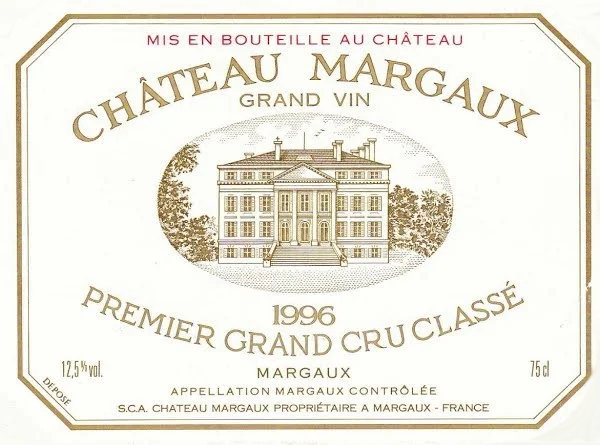Château Margaux 2010
Review of the Estate
Château Margaux is known for producing some of the silkiest, most aromatic wines in Bordeaux and it has been famous for doing so for centuries. The origins of the estate may be traced back to the 15th century when the Lestonnac family took over a grain growing property known as Lamothe (deriving from la motte - meaning a small rise in the land, or hill). The agricultural change from cereal crops to vines was led by Pierre de Lestonnac from 1572 to 1582. Further developments occurred when, over a century later, Chateau Margaux estate manager, Monsieur Berlon, saw the benefits of vinifying red and white grapes separately. This change was what set Chateau Margaux firmly on the path to modern vinification practices and international renown.
This reputation spread over the next several hundred years. Sir Robert Walpole, the English Prime Minister in the early 18th Century, declared himself an avid supporter of Chateau Margaux and was known to purchase four casks every three months! When the Marquis de la Colonilla purchased the estate in the early 19th century, the outstanding reputation of Chateua Margaux's wines demanded an impressive chateau to match. Built in 1810 by Louis Combes, the current chateau is a unique example of the neo-classical style. With its structured facade, balanced by ionic columns, it exudes a refined elegance not dissimilar to that of the wines produced within. Chateau Margaux was officially recognised as an historic monument in 1946.
Today Chateau Margaux is owned by Corinne Mentzelopoulos. Her father, Andrè, purchased the estate in 1977 and invested significantly in the regeneration of the vineyard and winery by installing new drainage systems, replanting vines, creating a new underground cellar and investing in new oak barrels. The result of these improvements is evident in the spectacular and consistent vintages produced by Chateau Margaux since the 1978 vintage. This has allowed Chateau Margaux to remain a dominant force in a highly competitive market and maintain its preeminent global reputation.

Vineyard
Surface area: 192.7 acres
Grape Varieties: 75% Cabernet Sauvignon, 20% Merlot, 5% Cabernet Franc and Petit Verdot
Average age of vines: 35 years
Density of plantation: 10,00 vines per hectare
Average yields: 45 hectoliters per hectare
Average cases produced: 16,500 per year
Plateau of maturity: 9 - 35 years
Château Margaux 2010 Reviews / Tasting Notes
Lisa Perrotti-Brown - The Wine Advocate
Point Score: 98+
Deep garnet in color, the 2010 Chateau Margaux features notions of minted blackcurrants, new leather and Black Forest cake with nuances of sauteed herbs, tar, underbrush and wild fungi plus a waft of cedar. Full-bodied, the palate has a rock-solid structure of firm, grainy tannins and bold freshness supporting the taut, muscular fruit, finishing long and earthy.
Decanter
Point Score: 99
As we head out of Pauillac, you feel the register change. It takes a heartbeat to adjust, but then you start to see the beauty of a different style of 2010, a little more elegant, a little more sculpted, with concentration that sits deep in the body of the wine but builds more slowly through the palate. This shows the beauty of the appellation of Margaux in the way that you always want and hope the First Growths will - a signpost towards the rest, showing why they should be celebrated. Here are violet aromatics, soft black truffle flavours and silky, elongated tannins. Extremely good quality; fairly savoury berry fruits. As with all of these, there's a long long life ahead of it, and best to be put away for another five years at least.
James Suckling
Point Score: 100
A phenomenal nose of roses, violets, and other flowers. Subtle yet rich raspberries and currants. It is 90% Cabernet Sauvignon. The is a curious wine, almost ethereal. It is all in the front of the palate with ultra-fine tannins. It is full and very, very rich but it is forever balanced and in harmony What a wine. It is a pinpointed wine. So cerebral. It sends shivers down my spine. Incredible.